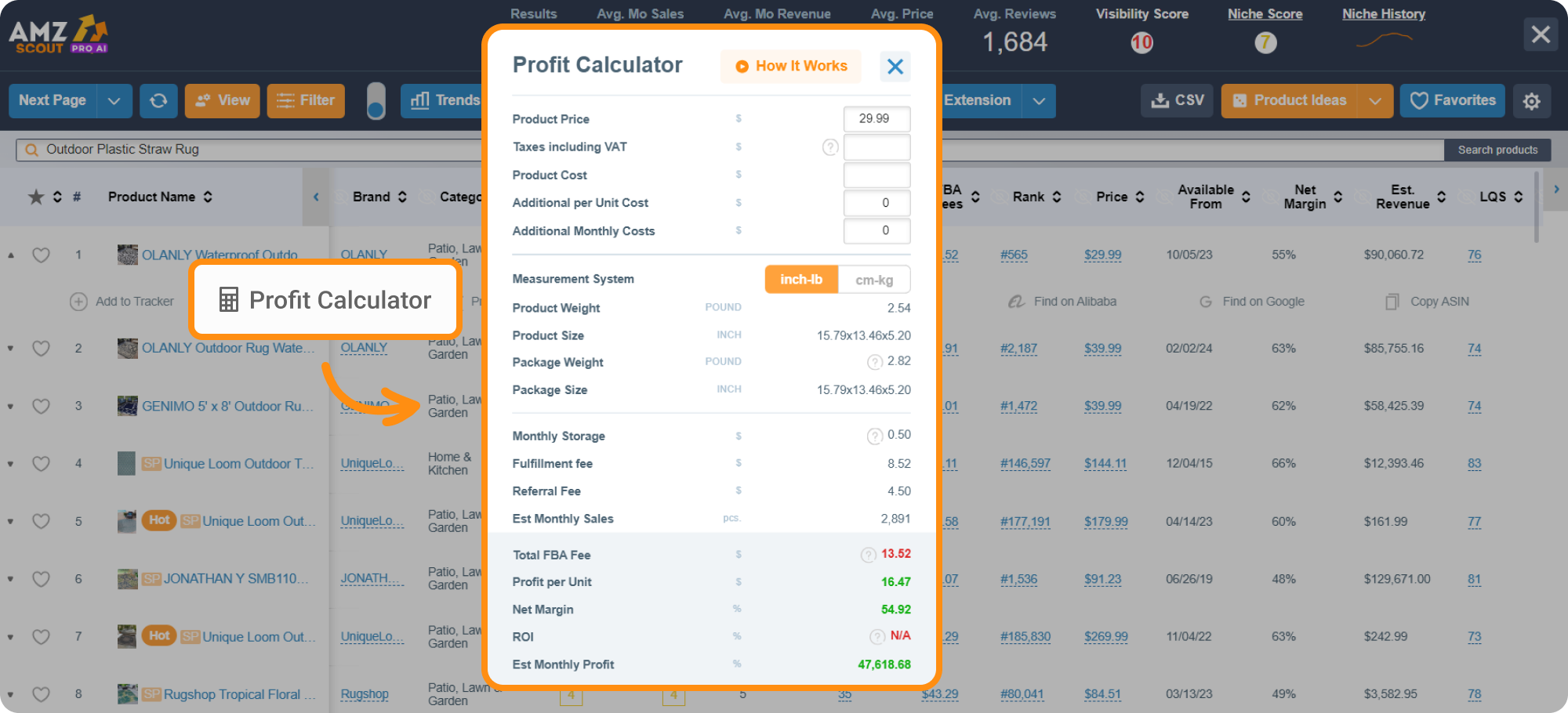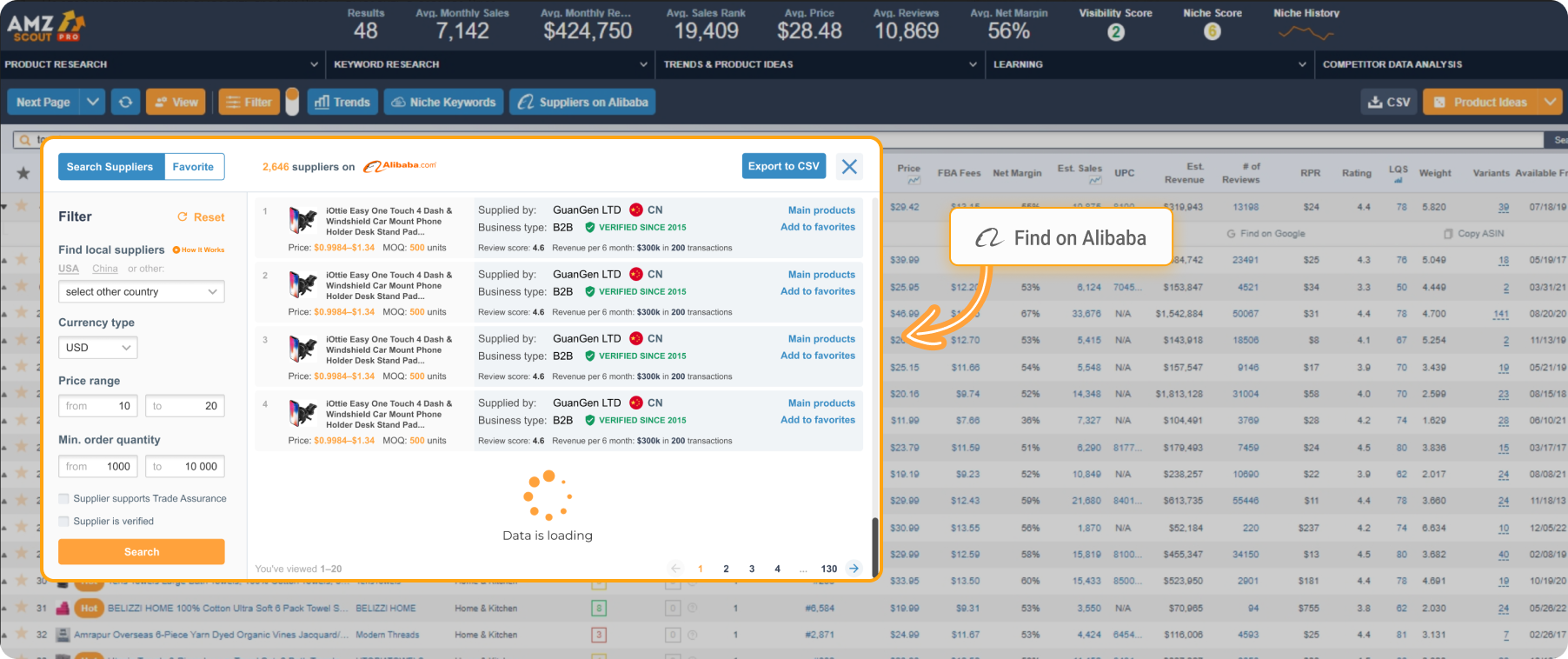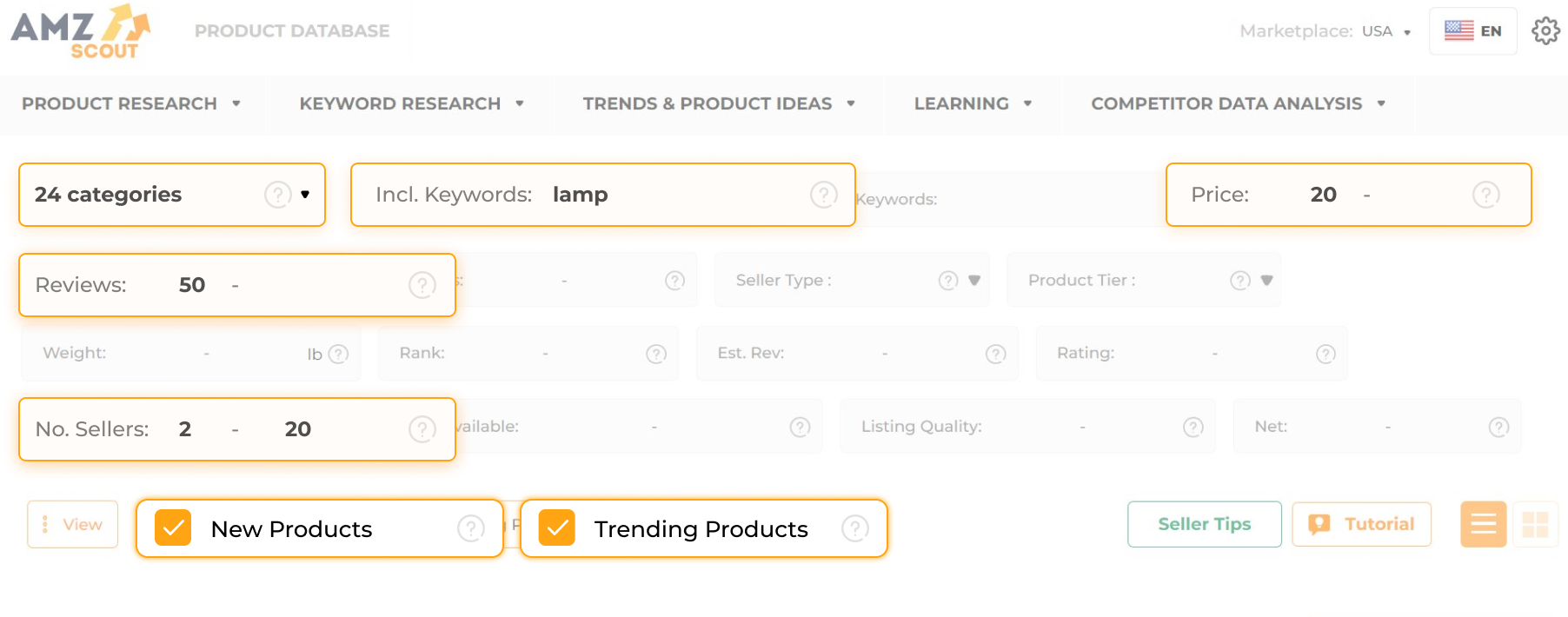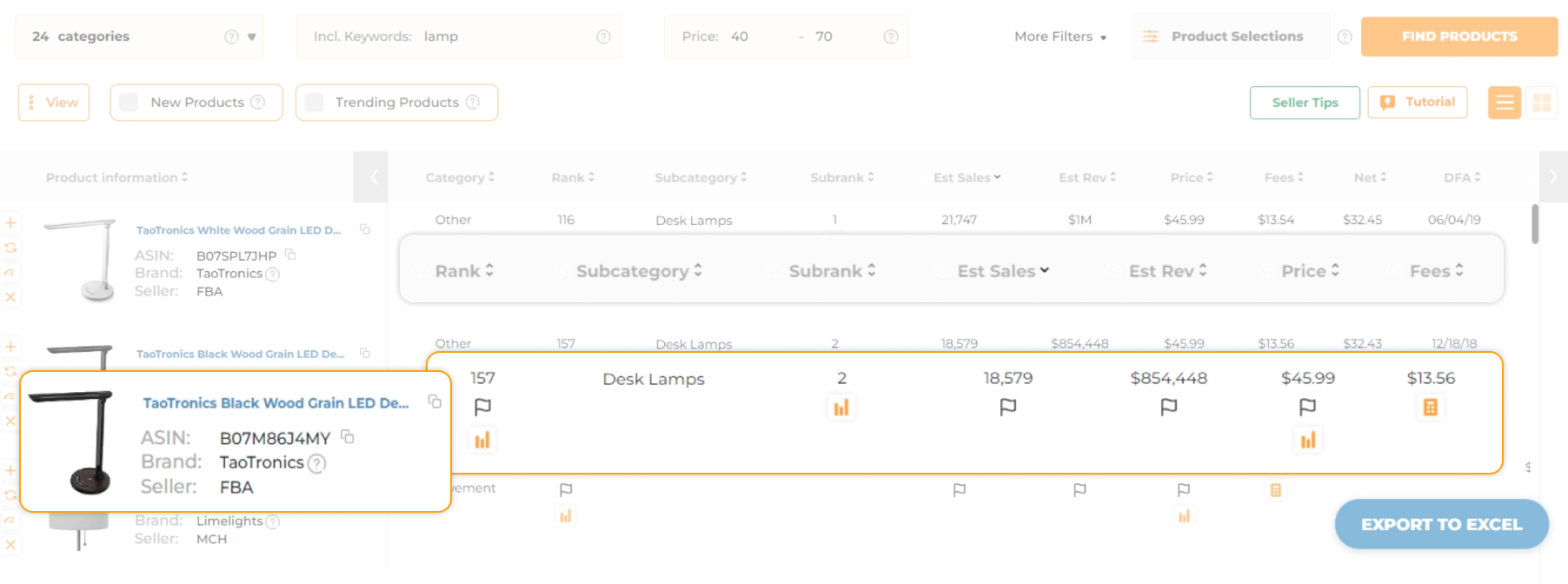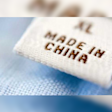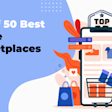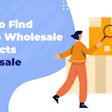
25 Best Chinese Wholesale Websites and Tips for Sourcing from China
When you’re looking to manufacture products under your own brand or buy items for resale at lower prices, placing a bulk order is often essential. Today, more and more sellers are turning to Chinese wholesale websites, which feature a wide range of suppliers and manufacturers along with competitive prices. However, with so many options available, choosing the right platform can also be challenging.
In this article, we’ll explore the 25 best Chinese wholesale websites, share practical tips on how to order efficiently, and sell these products for maximum profits.
Table of contents
25 Wholesale Websites Based in China
After analyzing the experiences of top-performing Amazon sellers, we compiled a list of 25 China-based wholesale websites where you can find reliable vendors. Each platform has its own unique features, making it suitable for a variety of sourcing needs. Below is a brief overview of each website:
1. Alibaba
Alibaba offers a wide range of product categories, so it’s a great option for both resellers and private label businesses. With the largest collection of suppliers globally, this site provides competitive pricing. However, while payments are secure, timely delivery is not always guaranteed, so it’s important to plan accordingly when placing an order.
How To Find the Best Deals on Alibaba
Alibaba hosts over 200,000 suppliers with over 200 million products, which can make selecting a supplier challenging.
To start, you can identify profitable products using AMZScout, a tool designed to help sellers gather market data and make informed decisions with ease. Since Amazon reflects global shopping trends, it will help you spot high-demand products. Once you find a product that shows promise, your next step is finding reliable suppliers on Alibaba.
Here’s how:
1. Install the AMZScout PRO AI Extension. Enter your email address to start a free trial.
2. Search for niches/products you’re interested in. Search for products or categories that appeal to you, such as those based on your own personal hobbies, trending items from social media, or popular products in physical stores.
3. Open the AMZScout PRO AI Extension. Click the AMZScout logo in your browser's top-right corner after the results load.
4. Calculate profitability. Once you find a product that catches your eye in the displayed widget, use the Profit Calculator (located under the product) to estimate its potential profitability. Enter all relevant costs (input approximate product costs initially, and refine the figures once you identify a supplier). Aim for a profit margin above 20% to ensure sustainable growth.
If the product looks promising, now it's time to find a reliable supplier.
5. Find suppliers on Alibaba. Once you identify potentially profitable products, click “More Actions” under the product image and select “Find on Alibaba.” You’ll be redirected to Alibaba’s search results for that product.
6. Evaluate supplier offers. When reviewing suppliers, focus on these key metrics:
Verified status: Confirm if Alibaba has vetted the supplier.
Time on platform: See how long the supplier has been active.
Ratings & reviews: Look for sellers with high ratings and a substantial number of reviews.
Easy returns: Verify if the supplier offers a return option.
Number of pieces sold: Assess the number of units sold to gauge the product’s popularity.
Minimum order quantity: Ensure that the MOQ aligns with your budget.
Buyer protections: Look for secure payment options and clear refund policies.
This streamlined approach helps you identify profitable products and reliable suppliers all in one place.
2. 1688
1688 is part of the Alibaba Group, and provides a wide selection of products for B2B transactions. Average product prices are generally 30-50% lower than Alibaba due to its local focus.
Its extensive range and competitive pricing makes this platform appealing to wholesale buyers; however, it does cater primarily to the Chinese market. Therefore, you may need to use Google Translate when navigating this website.
3. Global Sources
Global Sources features verified suppliers with a catalog of over 1.5 million products, mostly focused on electronics and gadgets. Their flagship trade shows attract over 20,000 buyers annually from more than 140 countries, enabling face-to-face negotiation.
4. DHgate
DHgate is a great option for small business owners looking for private label solutions, as it offers low minimum order quantities (MOQs) and discounts for new customers. The platform also provides excellent customer support to assist users. However, concerns about counterfeit or replica items are frequently mentioned by buyers on this site.
5. Geshow
Geshow specializes in beauty and luxury brands with over 10,000 SKUs from authorized distributors. It offers official reseller rights which is a rare benefit in the Chinese wholesale market. Most international shipments take 10-20 days, depending on customs.
6. Made-in-China
Made-in-China is a user-friendly site that features a secure payment system. The platform offers supplier verification and inspection services, which have increased customer trust, leading to a 90% repeat buyer rate. While it offers products across all categories, Made-in-China’s primary focus is on industrial goods.
7. AliExpress
AliExpress, catering to small buyers, has an average product price of $10-$50 across popular categories like fashion and electronics. Delivery times can range from 10 to 45 days, depending on the shipping option and destination country.
8. Temu
Temu is known for having some of the lowest prices and attractive shipping options, including fast delivery and no customs fees for orders under $800. While Temu is not a traditional wholesale supplier, it does offer discounts on larger orders. However, buyers should also be mindful of potential quality issues and watch out for replica items.
9. HKTDC
HKTDC is well-known for its trade shows and has a long-standing market presence, making it a trustworthy choice for buyers. This platform features a wide variety of niche products. However, it may not be the most modern option for international orders due to its unclear logistics system.
10. Chinavasion
Chinavasion focuses primarily on electronics, but also offers a variety of products across other categories. Known for its competitive pricing, this platform provides a favorable refund and warranty policy, making it appealing to buyers. However, the brand selection in the electronics category is limited to just Android systems.
11. YiwuGo
YiwuGo offers a diverse selection of products across various categories, and is known in particular for its accessories and home goods. While this website is in English, it mainly targets the local market. The platform features useful tools like price comparisons, ratings, and reviews to help streamline the supplier selection process.
12. LightInTheBox
LightInTheBox boasts a vast selection of products, primarily focusing on ready-made clothing and supporting both B2B and B2C transactions. According to Trustpilot, the prices are attractive; however, customers often encounter additional costs, such as insurance and taxes, which can accumulate unexpectedly.
13. ECVV
ECVV is dedicated to industrial goods and provides a convenient platform that allows users to access supplier quotes quickly and utilize various payment options. It specializes in assisting businesses in finding tailored custom manufacturing solutions. Unfortunately, users often encounter technical difficulties, which can result in the website being temporarily unavailable.
14. Toysbaba
Toysbaba specializes in wholesale toys, including rare and innovative collectibles, offering a wide and cost-effective catalog. While it primarily caters to the local market, it also operates internationally, making its products globally accessible.
15. Zhiai Maternity & Baby
Zhiai Maternity & Baby offers a wide range of products, including school supplies, creams, and baby food. The platform is known for its reliable quality and is a great choice for wholesale buyers looking for budget-friendly options. Although it primarily focuses on the local market, it still offers accessibility for international orders.
16. Crov
Crov offers over 36,000 products across a wide range of categories, from art to gardening, and provides door-to-door logistical support. While it has an extensive catalog, beginners may find this platform challenging to navigate, as it requires requesting and comparing quotes before placing orders.
17. Banggood
Banggood offers a wide range of electronics, and caters well to both wholesale and dropshipping needs. It provides competitive options for resellers, though some users have reported occasional quality issues. Despite these concerns, it remains a popular choice for cost-effective products.
18. b2b168
B2B168.com is a versatile platform for electromechanical and other industrial products, featuring a variety of brands, including international ones. Prices are negotiable, but you'll need to contact suppliers directly to get quotes, as prices aren’t listed on the site.
19. VVIC
VVIC offers a vast selection of wholesale fashion items. This site is particularly popular in the Guangzhou region and aimed at younger audiences. Known for trendy clothing like egg-shaped jackets, it features low prices, but suppliers rarely provide DDP, so customs fees may apply.
20. Vipmpro
VIPMRO specializes in MRO (maintenance, repair, and operations) supplies, while offering good deals and a broad selection of products. Buyers can access suppliers directly, and a detailed purchasing guide is available. Since the website is in Chinese, using Google Translate might be necessary.
21. Tomtop
Tomtop focuses primarily on practical and tech products, and it’s a go-to site for affordable Xiaomi items. While the website design may seem outdated, it holds a solid 4-star rating on Trustpilot, with users appreciating its reliability and product quality.
22. Zaful
Zaful is an online fashion platform founded in Hong Kong, with an office in the U.S. Known for its trendy, affordable pieces (especially for swimwear), it’s popular for its low prices, with T-shirts averaging around $6. However, the company has faced criticism for slow shipping times and concerns about working conditions.
23. ZGHZP
ZGHZP is a wholesale cosmetics platform with popular Chinese and Korean brands, offering customization and also marketing services. It’s a great option for sourcing in-demand products, and trade shows are also useful for finding fresh product ideas.
24. Yaaku
Yaaku specializes in fashion and accessories, and provides a diverse selection of products. Since the platform does not have a standard minimum order quantity (MOQ), it’s essential to check the MOQ with each individual supplier, as they may vary. Yaaku offers a transparent fee structure, ensuring that there are no hidden costs.
25. ChinaTeaWholesale
ChinaTeaWholesale specializes in wholesale Chinese tea and offers a modern, easy-to-navigate website that’s available in several European languages. Fast delivery is provided through reliable carriers like UPS, FedEx, and DHL.
Each above-mentioned platform has its own strengths and weaknesses. To build a reliable supply chain and prevent stockouts, consider sourcing from multiple vendors. This diversification strategy can help you mitigate risks and improve operational efficiency.
Tips for Buying Products from Chinese Wholesale Websites
While sourcing products from Chinese wholesale websites offers cost-effective opportunities, it also requires careful planning. Here are a few tips to ensure that you make informed decisions and establish reliable partnerships:
Find Profitable Product Ideas
Effective sourcing starts with selecting high-potential products to maximize profitability and minimize wasted effort. By using AMZScout’s Product Database, sellers can identify promising items with strong demand and sales potential to streamline supplier selection.
Here’s how:
1. Access the Product Database. Sign up with your email address to begin a free trial.
2. Use filters to refine your search. There are a few universal parameters to look for:
Category: Choose any that interest you from 24 options.
Estimated Sales: Set a minimum (for example, “200 sales/month”) to ensure demand.
Weight: Limit to 3 lbs to lower shipping costs.
Rating: Select 4+ stars to ensure customer satisfaction.
3. Review your results. Click “Find Products” to generate a list of items that match your filters. Sort by sales volume to highlight top-performing products.
Note: For deeper insights, use AMZScout’s PRO AI to evaluate product history, competition, and other key metrics to confirm profitability.
By utilizing AMZScout’s Product Database, sellers can focus on high-demand products and increase the likelihood of their business’s success. Now, let’s proceed to choosing a supplier.
Compare Multiple Suppliers
To select the best supplier offer, contact 10-15 suppliers to obtain quotes. Pay attention to the following factors:
Communication with the supplier: Effective communication fosters a reliable long-term partnership with clear and prompt responses.
Obtain a sample: Requesting samples ensures product quality meets standards before committing.
Reliability: Verify the supplier’s reliability through reviews, verified profiles, and scam reports.
After identifying promising suppliers, you can negotiate terms to secure the best deal. Let’s review how to do this below.
Negotiate the Best Deals
Once you’ve chosen a product you want to sell, visit the websites of the suppliers you’ve selected. To ensure that you get the best deal, it’s important to compare quotes from at least 10-15 suppliers. Be sure to ask key questions like:
- Do you offer discounts for bulk orders?
- What are my payment options? Do I need to pay upfront?
- How long will it take for the product to be ready?
- What kind of warranty do you offer? What is your return policy?
- What are your delivery times and costs? Can DDP (Delivered Duty Paid) be included?
Negotiating effectively with suppliers helps you secure cost savings and favorable terms. However, addressing legal considerations is also essential, as detailed in the following section.
Confirm All Terms in Writing
Finalizing supplier agreements requires thorough legal documentation to safeguard your business interests. Here are the key steps:
Draft a formal contract: Create a detailed contract outlining all agreement terms. Consult with a legal professional to ensure that your document is comprehensive and binding.
Address compliance requirements: Specify compliance with import regulations in the contract such as customs duties and safety standards. Written terms clarify responsibility for certifications or taxes.
Include dispute resolution mechanisms: Define procedures for handling disputes in the agreement, such as mediation or arbitration. Clear terms outline jurisdiction and applicable laws.
This allows you to pave the way for smooth and profitable operations.
Conduct a Thorough Quality Inspection
Ensuring product quality upon delivery is critical to maintaining customer satisfaction and business reputation. Thorough inspections confirm that goods meet agreed standards before distribution.
Here are a few tips:
Perform personal inspections: Examine products closely to confirm that they meet specified quality standards.
Contact suppliers promptly: If any defects or discrepancies are found, notify the supplier immediately.
Monitor customer feedback: Review customer reviews to identify any areas for product improvement and differentiation.
Thorough quality inspections lead to increased positive customer reviews and market differentiation.
By implementing these practices, you'll foster efficient sourcing and sustained business growth.
Why Buy Wholesale Products on Chinese Websites?
While sourcing locally can be convenient, thanks to the lack of language barriers, minimal time differences, and faster delivery, many sellers are increasingly turning to China for wholesale orders. Here are several reasons to consider this option:
Unbeatable prices: Chinese websites often offer cheap pricing which can lower your costs significantly.
Extensive product and supplier selection: Last year, Alibaba alone reported having over 200,000 suppliers and 200 million products from which to choose.
Streamlined logistics: Many suppliers offer comprehensive services, handling everything from production to delivery.
Tailored product solutions: There are many niche specialists in China who are capable of manufacturing a wide array of products to meet your specific needs.
Enhanced Quality Standards: The reputation of "Made in China" has improved significantly, with many suppliers now adhering to higher standards of quality and safety, and better labor conditions compared to other Asian countries.
Ordering from China can be highly efficient when you find the right platform. Let’s explore the sites worth considering for your sourcing needs.
Conclusion
A successful business depends on an efficient supply chain, with wholesale supplier choice and product selection as key factors. Consider using the AMZScout toolkit to simplify this process by identifying top-selling items, and getting ideas to enhance products under your brand. This will help you boost your chances of success and free up time for other important tasks.

